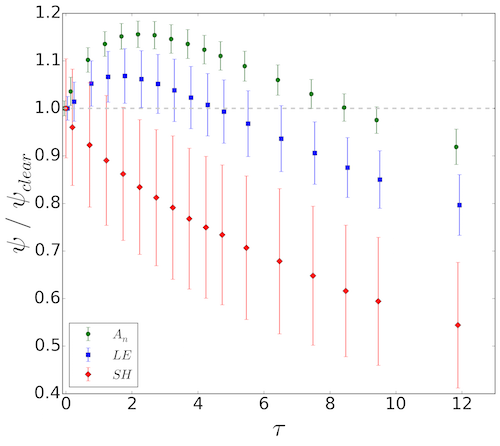Clouds can enhance photosynthesis and evapotranspiration

Clouds reflect incoming solar radiation back into space, but also increase the amount of diffuse radiation that reaches the land surface. Our new study (lead author Xabier Pedruzo-Bagazgoitia) shows that thin clouds are beneficial for CO2 assimilation and evapotranspiration, due to the influence of diffuse radiation. This analysis is based on a typical Dutch early autumn day with cumulus convection.

The figure above shows the CO2 assimilation An, the evapotranspiration rate LE and the sensible heat flux SH as a function of the cloud optical depth $\tau$ relative to their magnitude under clear sky conditions. Under conditions of thin clouds ($\tau$ below 5) there is more CO2 assimilation and more evapotranspiration than under conditions without clouds. Under clouds of moderate thicknesses ($\tau$ between 5 and 8.5) CO2 assimilation is still enhanced compared to clear-sky conditions, but evapotranspiration is less.
This study highlights the importance of understanding cloud formation over land in order to understand the Earth's carbon and water budget.
Pedruzo-Bagazgoitia, X., H.G. Ouwersloot, M. Sikma, C.C. van Heerwaarden
, C.M. Jacobs, and J. Vilà-Guerau de Arellano, 2017: Direct and Diffuse Radiation in the Shallow Cumulus–Vegetation System: Enhanced and Decreased Evapotranspiration Regimes. J. Hydrometeor., 18, 1731–1748, https://doi.org/10.1175/JHM-D-16-0279.1.
